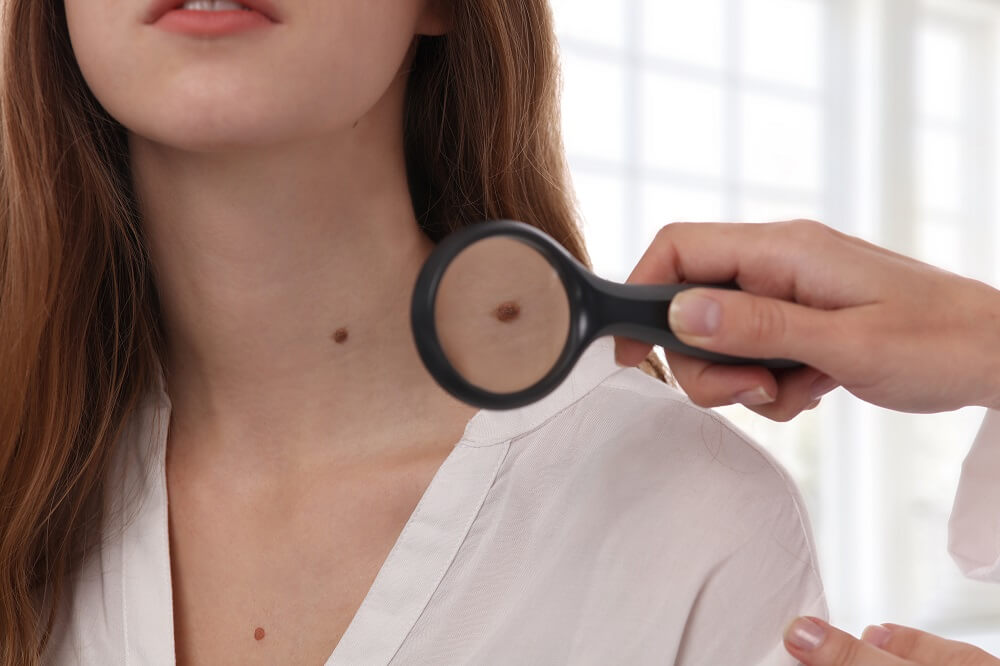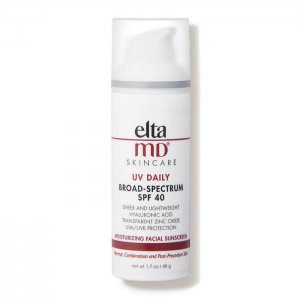With prom and vacation season right around the corner, your teen is likely giving you a big sales pitch in favor of using tanning beds to offset their dress color or develop a base tan before their trip to the beach. Tanning salons are also making a big push this time of year to bring in teens before the prom, spring break, and summer vacation. They’ll be putting out advertisements telling potential tanners about the importance of creating a base tan to avoid sunburns or that controlled tanning is safer than tanning on the beach.
According to Dr. Kathryn “Celeste” Durham of the U.S. Dermatology Partners South Hulen in Fort Worth, TX., “There is no safe way to use a tanning bed. Every time you get in a tanning bed, you are increasing your risk for both nonmelanoma skin cancers (basal and squamous cell carcinoma) and melanoma, the most deadly form of skin cancer.” Skin of every hue is beautiful, and helping our teens learn to love their skin now can make a difference that prevents a lifetime of skin health issues and even death. In this blog, we’re going to talk about a few of the MANY reasons to avoid tanning beds.
1 – Skin Cancer

Skin Cancer is treatable when caught early
This is the most obvious reason to avoid the tanning bed. Like exposure to the UVA/B rays from natural sunlight, tanning beds significantly increase the risk of developing skin cancers. In fact, the Food and Drug Administration (FDA) lists indoor tanning as a carcinogen (cancer-causing product) and imposes a special tax on the use of indoor tanning beds the same way it does for cigarettes and other carcinogenic goods. Research from the American Academy of Dermatology (AAD) says that indoor tanning before the age of 35 increases the risk of developing melanoma by 59%, and this risk increases every time you visit a tanning bed. Dr. Durham says she’s, “Seeing more skin cancer cases in young people. You’re never too young to get skin cancer. Melanoma is the most common skin cancer cause of death in people under 30.” Is a tan really worth that risk?
2 – Other Health Concerns
In addition to a significantly increased risk of both melanoma and nonmelanoma skin cancers, tanning beds have also been linked to other health concerns. One common issue is immune suppression of the skin, which makes it more difficult for patients to heal, increasing the risk for bacterial infections. Another sales pitch you may hear at the tanning salon is that tanning can improve skin health for acne sufferers. This is blatantly untrue. The heat and layers of tanning products on the skin often increase the risk for breakouts. Finally, even if you wear the special goggles used for tanning, your eyes are still at risk for damage. Regular tanning risks damage to the internal and external structures of the eyes and the eyelids.
3 – Early Signs of Aging
If serious health risks don’t deter would-be-tanners from the lure of prom-season tanning specials, vanity might do the trick. Dr. Durham always reminds her patients who use indoor tanning beds, “Tanning is a sure-fire way to damage skin, make wrinkles appear, and for you to start looking older at a much younger age.”
4 – Addiction – Seriously
Something that many people are not aware of is the addictive quality of indoor tanning. While it may not beat out nicotine in cigarettes, the endorphins released during tanning can lead to serious addiction for some people. Dr. Durham relates the story of a patient who she treats regularly for basal cell carcinoma who said she was going to continue to tan. According to Dr. Durham, the patient said, “She could see why it is hard for people to quit smoking because she can’t quit tanning.”
5 – There’s No Such Thing as a Base Tan
Many people ask their dermatologist, “Well, isn’t it better to build up a base tan and not burn when you go on vacation?”
Dr. Durham says, “This is a sales tactic designed to make the tanning salon more money, and leaves you unprotected from a known and very real carcinogen.”
Don’t buy the sales pitch. It sounds good when you hear people at the tanning salon say this, but it simply isn’t true. Creating a base tan still requires you to expose yourself to UV rays that damage cellular DNA. Additionally, those who have a base tan often, falsely, believe they don’t need to maintain good sunscreen practices when they get out into the sun, which further exposes skin to potential damage.
6 – Controlled Tanning is not Safer
Much like the myth of the base tan, controlled tanning is not safer than tanning through natural sunlight exposure. According to many tanning salons, when you tan for just a few minutes at a time, you build up a tan slowly, which is safer than laying out for hours. Just like the myth of the base tan, there is just no such thing as safe UV exposure. According to Dr. Durham, “Even if you are tan you can still burn and every time you tan or burn you damage your skin’s cellular DNA, making it more likely you’ll develop skin cancer.”
7 – The Cost of using Tanning Beds
Let’s talk about those ridiculous tanning bed fees. Due in large part to the FDA’s proclamation that tanning beds are a carcinogen, the price of tanning has skyrocketed in recent years, and as is the case with the purchase of other carcinogens (like cigarettes), there’s a 10% tax on tanning bed usage. If the ever-rising cost of indoor tanning isn’t enough, you should consider the possible long term cost if you’re hit with a cancer diagnosis. Those who are diagnosed with skin cancer can pay hundreds of thousands or even millions of dollars for treatments, medications, and hospitalizations.
How to Keep Your Skin Looking & Feeling Great

Shop sunscreens on DermSkincare.com »
Is Sunless Tanning Safer?
Another option is spray or lotion tanning. These products all have the active ingredient dihydroxyacetone (DHA). When applied to the skin, DHA is absorbed into the skin, staining the top layer. While the FDA has approved these products for short term use, some research indicates that DHA can be damaging to cellular DNA. Before long term usage can be approved, more research needs to be done.
Need Skin Care Help? Reach Out to U.S. Dermatology Partners
The skincare experts at U.S. Dermatology Partners hope we’re entering an age where young people are starting to see that protecting their skin now means skin will be healthier and look better down the road. Whether you’re looking for help repairing skin damage due to tanning beds or you’re in need of help with skin cancer, U.S. Dermatology Partners is here for you. If you live near Fort Worth, Dr. Durham and the team at U.S. Dermatology Partners South Hulen would love to partner with you to achieve optimal skin health. We also have local dermatology practices across the nation, so take a few moments to complete our online form to get in touch with the location nearest you. One of our local team members will give you a call back soon to answer all of your questions.
Find a location near me
or

